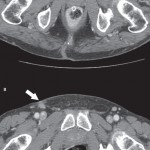Video: Urinary continence surgery in England
The changing face of urinary continence surgery in England: a perspective from the Hospital Episode Statistics database
John Withington, Sadaf Hirji and Arun Sahai
Guy’s and St Thomas’ NHS Hospitals’Trust, King’s College London, London, UK
OBJECTIVE
To quantify changes in surgical practice in the treatment of stress urinary incontinence (SUI), urge urinary incontinence (UUI) and post-prostatectomy stress incontinence (PPI) in England, using the Hospital Episode Statistics (HES) database.
PATIENTS AND METHODS
We used public domain information from the HES database, an administrative dataset recording all hospital admissions and procedures in England, to find evidence of change in the use of various surgical procedures for urinary incontinence from 2000 to 2012.
RESULTS
For the treatment of SUI, a general increase in the use of synthetic mid-urethral tapes, such as tension-free vaginal tape (TVTO) and transobturator tape (TOT), was observed, while there was a significant decrease in colposuspension procedures over the same period. The number of procedures to remove TVT and TOT has also increased in recent years. In the treatment of overactive bladder and UUI, there has been a significant increase in the use of botulinum toxin A and neuromodulation in recent years. This coincided with a steady decline in the recorded use of clam ileocystoplasty. A steady increase was observed in the insertion of artificial urinary sphincter (AUS) devices in men, related to PPI.
CONCLUSIONS
Mid-urethral synthetic tapes now represent the mainstream treatment of SUI in women, but tape-related complications have led to an increase in procedures to remove these devices. The uptake of botulinum toxin A and sacral neuromodulation has led to fewer clam ileocystoplasty procedures being performed. The steady increase in insertions of AUSs in men is unsurprising and reflects the widespread uptake of radical prostatectomy in recent years. There are limitations to results sourced from the HES database, with potential inaccuracy of coding; however, these data support the trends observed by experts in this field.




This “studio” looks rather familiar!